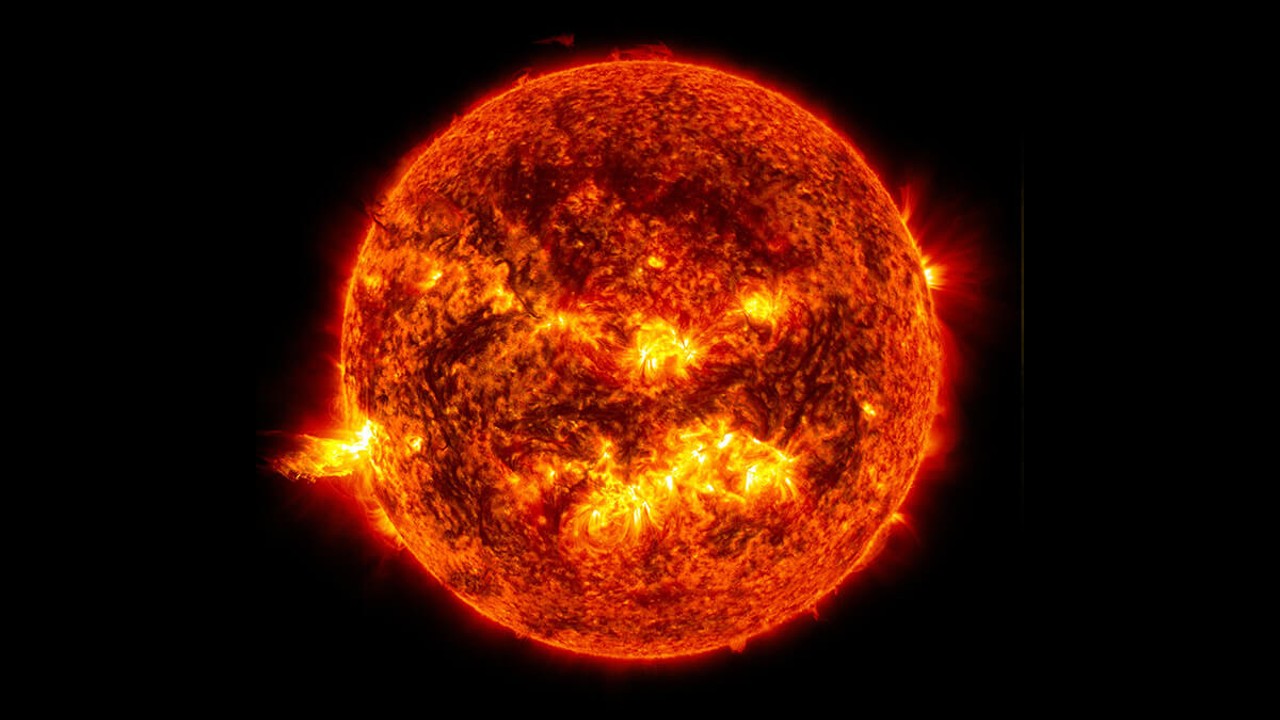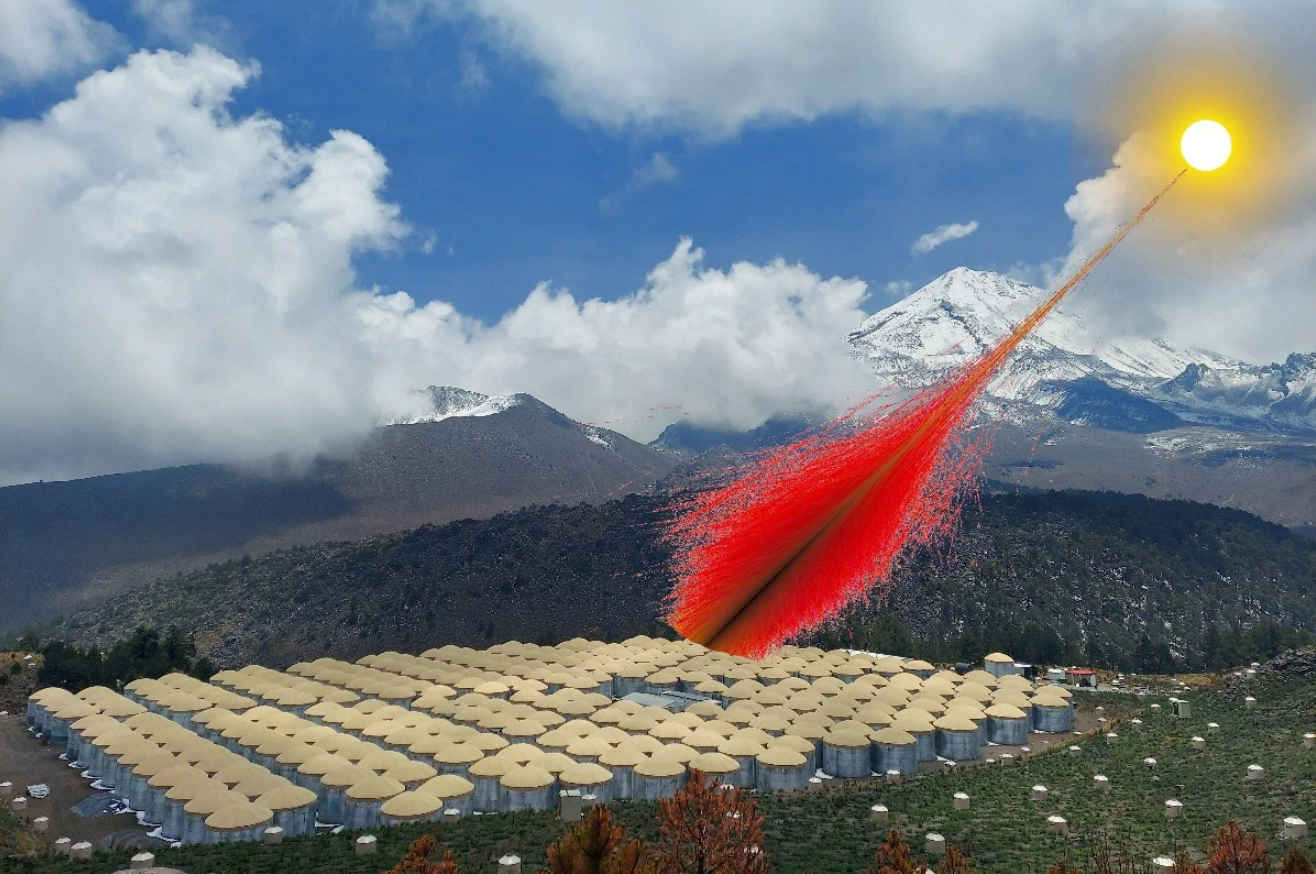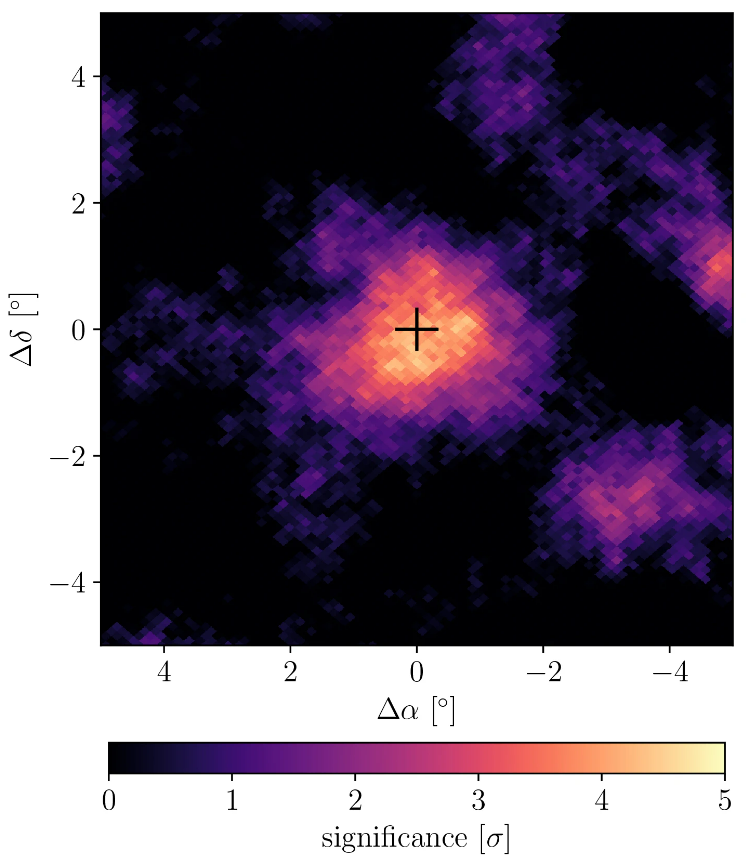Sun blasts out highest-energy radiation ever recorded, raising questions for solar physics
"We thought we had this star figured out, but that's not the case."

In a record-breaking discovery, scientists detected our very own sun emitting an extraordinary amount of gamma rays — wavelengths of light known to carry the most energy of any other wavelength in the electromagnetic spectrum. This is quite a big deal as it marks the highest-energy radiation to ever be documented coming from our planet's host star.
Something like 1 trillion electron volts, to be exact.
"After looking at six years' worth of data, out popped this excess of gamma rays," Meher Un Nisa, a postdoctoral research associate at Michigan State University and co-author of a new paper about the findings released Wednesday (Aug. 3), said in a statement. "When we first saw it, we were like, 'We definitely messed this up. The sun cannot be this bright at these energies.'"
Upon deliberation, however, the team realized that such brightness definitely existed — and it was simply due to the sheer amount of gamma rays the sun seemed to be spitting out.
"The sun is more surprising than we knew," Nisa said.
Before you start worrying, no, these rays can't harm us. But what they can do is have a pretty important ripple effect for the future of solar physics. In fact, they have already raised some important questions about the sun, such as what role its magnetic field might play in the newly observed gamma-ray phenomenon.
Related: Scientists may have just cracked the sun's greatest mystery
Breaking space news, the latest updates on rocket launches, skywatching events and more!
It's all thanks to a unique lens on the cosmos called the High-Altitude Water Cherenkov Observatory, or HAWC. In short, this observatory, completed in the spring of 2015, is a facility specifically designed to observe particles associated with very high-energy gamma rays and cosmic rays, the latter of which are equally energetic but also mysterious in that they often travel across the universe without exhibiting a clear starting point.
"In this particular energy regime, other ground-based telescopes couldn't look at the sun because they only work at night," Nisa said. "Ours operates 24/7."
HAWC basically uses a network of 300 large water tanks, a press release on the new study explains. Each of these tanks is filled with about 200 metric tons of purified water, and they all sit nestled between two dormant volcano peaks in Mexico more than 13,000 feet (3,962 meters) above sea level. All of this purified water is important because, as high-energy particles from space strike the liquid, the collision results in a phenomenon known as Cherenkov radiation (which you may have heard of if you've watched the TV show "Chernobyl").
Named after 1958 Physics Nobel Prize laureate Pavel Cherenkov, Cherenkov radiation essentially refers to a bluish glow that happens when electrically charged particles move at a certain speed through a certain medium, in this case water.
Tapping into this concept, HAWC's overall field of view covers 15% of the sky, allowing it to survey a total two-thirds every 24 hour period and figure out the roots of various high-energy particles headed to Earth.

What's normal solar radiation like?
Even though scientists have observed the sun sending out gamma ray emissions before, such observations are connected to incredibly extreme solar events such as super powerful solar flares. The recent gamma-ray discovery doesn't seem to be associated with that kind of scenario.
Within the sun, nuclear fusion processes are also expected to produce these strong wavelengths, however, gamma rays created that way don't exactly make it out of the star — let alone far enough to be detected by Earth-based instruments.
Instead, most of the time, what we see radiating out from our host star are infrared wavelengths, ultraviolet wavelengths and, of course, visible wavelengths that we can see with the unaided eye.
For context, one of those visible wavelengths carries an energy of about 1 electron volt. The gamma rays Nisa and fellow researchers witnessed, by contrast, exuded about 1 trillion electron volts. And, there were a lot of them.
The first time scientists observed gamma rays with energies of more than a billion electron volts, according to the release, was in 2011 with NASA's Fermi Gamma-ray Space Telescope. But Fermi had a limit. It maxed out at finding gamma rays with about 200 billion electron volts. So in 2015, the new study's research team started collecting gamma ray data with HAWC as this observatory didn't seem to have the same restriction.
"They nudged us and said, 'We're not seeing a cutoff. You might be able to see something," Nisa said.
Which brings us to the present — the first time we've seen sun rays with energies extending into a trillion electron volts. And, according to Nisa, that does not appear to be the maximum.
"We thought we had this star figured out, but that's not the case."
The paper was published Thursday (Aug. 3) in the journal Physical Review Letters

Monisha Ravisetti is Space.com's Astronomy Editor. She covers black holes, star explosions, gravitational waves, exoplanet discoveries and other enigmas hidden across the fabric of space and time. Previously, she was a science writer at CNET, and before that, reported for The Academic Times. Prior to becoming a writer, she was an immunology researcher at Weill Cornell Medical Center in New York. She graduated from New York University in 2018 with a B.A. in philosophy, physics and chemistry. She spends too much time playing online chess. Her favorite planet is Earth.

